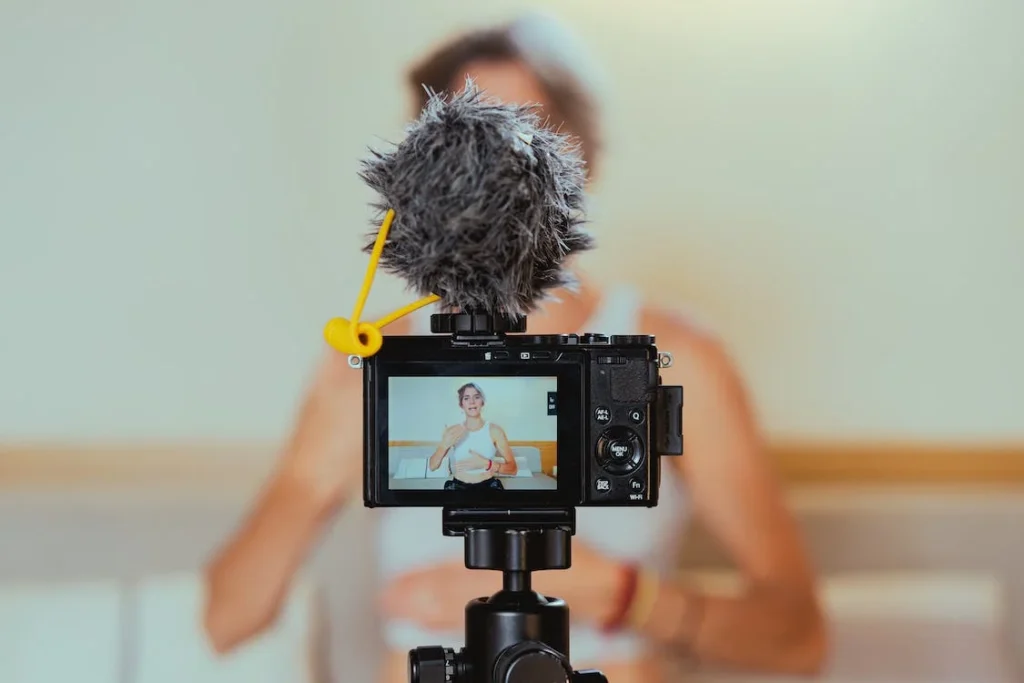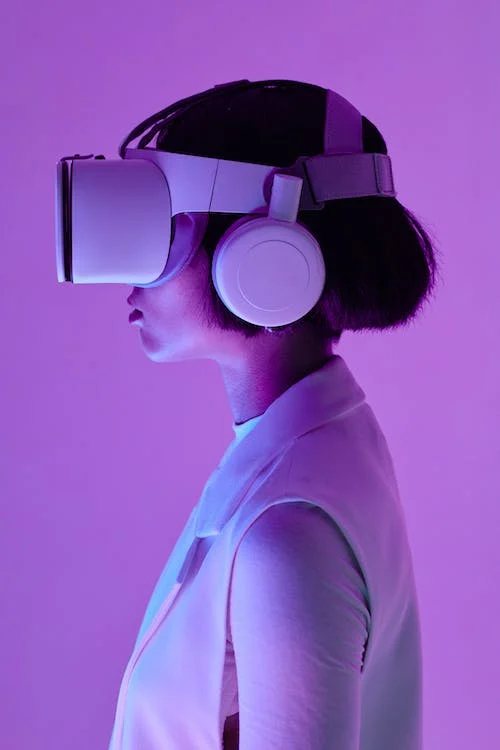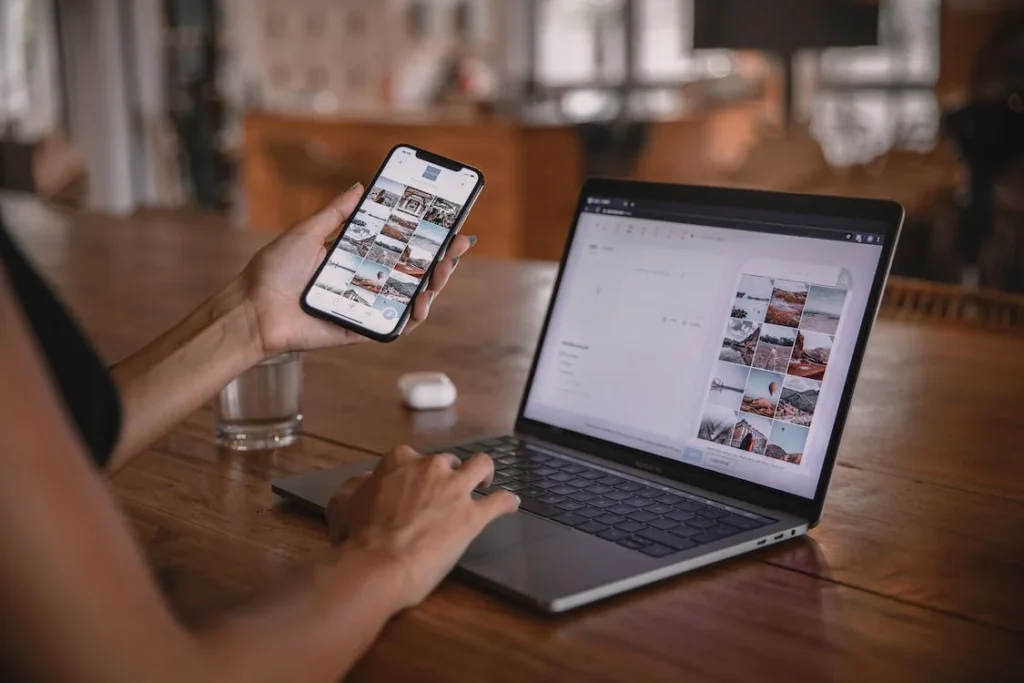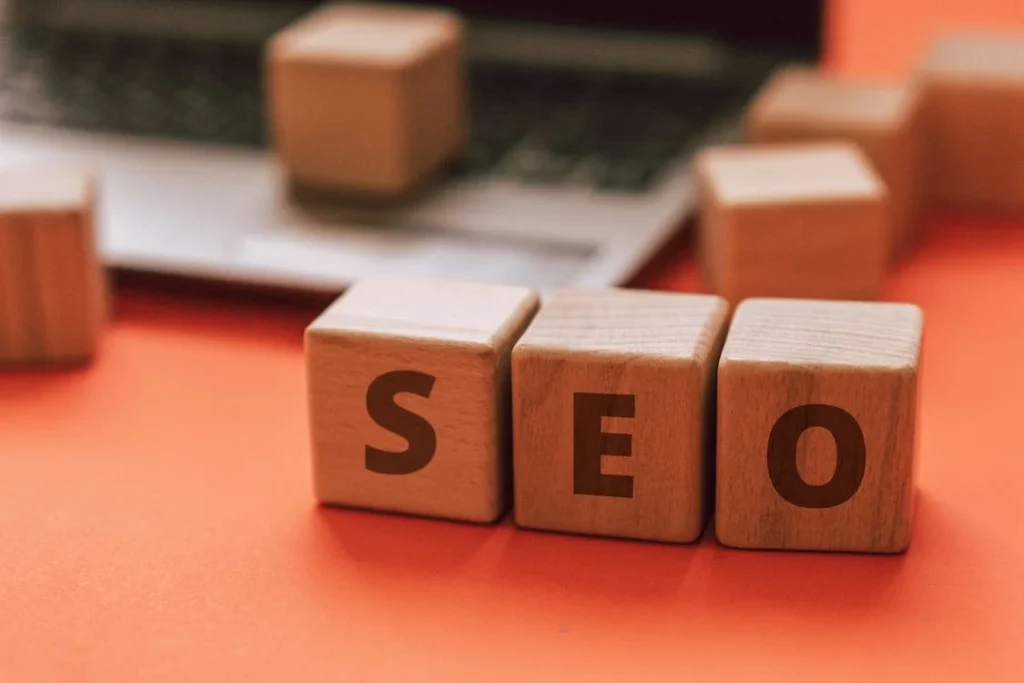This Article has been revised, edited and added to, by Poulomi Chakraborty.
- Why Influencer Marketing Works for Beauty Brands
- Authenticity and Trust
- Visual Appeal
- Engagement and Interaction
- Targeted Reach
- Harnessing Social Proof
- Amplifying Authenticity
- Creating Engaging Visual Content
- Building a Community
- Leveraging Micro and Macro Trends
- Driving Direct Engagement
- Enhancing Brand Storytelling
- Accessing Diverse Demographics
- Maximizing Content Longevity
- Finding the Right Influencers
- Audience Alignment
- Engagement Rate
- Content Quality
- Authenticity
- Past Collaborations
- Understanding Your Brand and Audience
- Leveraging Data and Analytics
- Assessing Content and Engagement Quality
- Vetting Influencer Credibility
- Building Relationships Before Proposals
- Considering Micro and Nano-Influencers
- Aligning Values and Vision
- Evaluating Long-Term Potential
- Negotiating Collaborations and Expectations
- Monitoring and Adapting Strategies
- Building a Successful Partnership
- Creating Compelling Campaigns
- Measuring Success
- Successful Influencer Collaborations
- Navigating Challenges in Influencer Marketing
- Future Trends in Influencer Marketing for Beauty Brands
- Conclusion
Influencer marketing has revolutionized the way brands interact with consumers, especially in the beauty and cosmetics industry. Gone are the days when traditional advertisements were the primary means of reaching potential customers. Today, beauty brands are leveraging the power of social media influencers to create authentic, relatable, and engaging content that resonates with audiences worldwide.
In this dynamic landscape, beauty gurus play a pivotal role. These influencers, often known for their expertise, charisma, and authenticity, have amassed large followings on platforms like Instagram, YouTube, and TikTok. Their followers trust their opinions and recommendations, making them invaluable partners for beauty brands looking to boost their visibility and credibility.
Collaborating with beauty influencers isn’t just about getting a product featured in a video or a post. It’s about building a relationship that aligns with both the brand’s and the influencer’s values and goals. This article will delve into the nuances of influencer marketing in the beauty and cosmetics industry, exploring how brands can effectively collaborate with beauty gurus to achieve their marketing objectives.
Why Influencer Marketing Works for Beauty Brands

Influencer marketing’s effectiveness in the beauty and cosmetics industry stems from the unique ways it leverages social proof, authenticity, and community building. For startup founders, understanding the deeper dynamics at play can help craft more strategic and impactful campaigns.
Authenticity and Trust
Beauty influencers have built their followings by sharing genuine and honest reviews of products. Their followers trust their opinions because they perceive them as real people who provide unfiltered feedback. This level of trust is hard to achieve through traditional advertising channels.
Visual Appeal
The beauty industry is inherently visual. Makeup tutorials, skincare routines, and product reviews are best showcased through photos and videos. Social media platforms like Instagram and YouTube are perfect for this, allowing influencers to create visually appealing content that captures the attention of their audience.
Engagement and Interaction
Influencers engage with their followers on a personal level. They respond to comments, answer questions, and even ask for feedback. This two-way interaction creates a sense of community and loyalty among their followers, making them more likely to consider and purchase the products recommended by their favorite influencers.
Targeted Reach
Influencers often have a niche audience. For beauty brands, this means they can reach specific demographics that are most likely to be interested in their products. Whether it’s vegan skincare enthusiasts or high-end makeup lovers, there’s an influencer out there with an audience that matches the brand’s target market.
Harnessing Social Proof
Social proof is a psychological phenomenon where people emulate the actions of others, believing that those actions reflect correct behavior. In the beauty industry, influencer endorsements serve as powerful social proof.
When consumers see their favorite beauty gurus using and praising a product, it validates their decision to purchase and use it themselves. This is especially effective when influencers demonstrate the product’s effectiveness through before-and-after comparisons, tutorials, or routine integrations.
Startup founders should aim to leverage this by collaborating with influencers whose audience trusts their beauty expertise and opinions.
Amplifying Authenticity
Authenticity is a key driver of influencer marketing’s success. Beauty influencers often build their brands on being real and relatable, sharing personal stories and honest product reviews. This authenticity creates a strong bond with their audience, making their recommendations more persuasive.
For startup founders, it’s crucial to identify influencers who naturally align with their brand’s values and ethos. Encouraging influencers to share genuine experiences and opinions about the product ensures that the content remains credible and relatable.
This authenticity translates to higher engagement rates and more meaningful connections with potential customers.
Creating Engaging Visual Content
The beauty industry thrives on visually engaging content. High-quality photos, detailed tutorials, and creative makeup looks captivate audiences and encourage interaction. Influencers excel at producing visually stunning content that highlights a product’s features and benefits.
Founders should focus on partnering with influencers who have a strong visual aesthetic and a knack for creating appealing content. Providing influencers with the right tools, such as professional lighting or exclusive product access, can further enhance the quality of the content and its impact on the audience.
Building a Community
Influencers are adept at building communities around shared interests and passions. Their followers often form tight-knit groups that interact regularly, sharing tips, advice, and experiences. By collaborating with influencers, beauty brands can tap into these communities and foster a sense of belonging and loyalty.
Startup founders should consider creating campaigns that encourage community participation, such as hashtag challenges, user-generated content, or exclusive access to new product launches.
Engaging with the community through the influencer helps build brand loyalty and creates a network of advocates who can amplify the brand’s reach.
Leveraging Micro and Macro Trends
The beauty industry is highly dynamic, with trends evolving rapidly. Influencers are often at the forefront of these trends, whether it’s a new makeup technique, a trending skincare ingredient, or an emerging beauty philosophy.
By staying attuned to these trends through influencer partnerships, brands can quickly adapt and capitalize on new opportunities. Startup founders should work with influencers who are known for setting or embracing trends, enabling the brand to remain relevant and appealing.
Collaborating on trend-focused content not only keeps the brand current but also positions it as a leader in innovation.
Driving Direct Engagement
Unlike traditional advertising, influencer marketing allows for direct engagement with consumers. Influencers can interact with their audience in real-time, answering questions, addressing concerns, and providing personalized recommendations.
This direct engagement builds trust and rapport, making the audience more receptive to the influencer’s messages. For startups, encouraging influencers to engage with their followers during campaigns can significantly enhance the impact.
Live Q&A sessions, interactive stories, and responsive comment sections can all drive higher engagement and foster a stronger connection between the brand and its potential customers.
Enhancing Brand Storytelling
Effective storytelling is at the heart of successful marketing. Influencers are natural storytellers, weaving brand narratives into their content in ways that resonate with their audience.
This storytelling can take various forms, from personal anecdotes to detailed tutorials that highlight the brand’s unique selling points. Startup founders should collaborate with influencers to co-create compelling stories that align with the brand’s mission and values.
By integrating the brand’s story into the influencer’s content, founders can ensure that their message is conveyed in an engaging and memorable manner.
Accessing Diverse Demographics
The beauty industry encompasses a wide range of demographics, from different age groups and ethnicities to varying beauty preferences and concerns. Influencers often cater to specific niches, allowing brands to reach diverse and targeted audiences.
For startup founders, identifying influencers who speak to different segments of the market can help in broadening the brand’s reach. Whether targeting young makeup enthusiasts, mature skincare aficionados, or niche beauty communities, collaborating with diverse influencers ensures that the brand’s message reaches all potential customers.
Maximizing Content Longevity
Content created by influencers often has a longer lifespan compared to traditional advertisements. Influencer posts, tutorials, and reviews can continue to attract views and engagement long after they are first published.
This reach and longevity make influencer marketing a cost-effective strategy for startups. Founders should consider repurposing influencer content across various channels, such as the brand’s website, social media platforms, and email campaigns.
This maximizes the value of the investment and ensures consistent brand presence across multiple touchpoints.
Understanding why influencer marketing works so well for beauty brands provides startup founders with the strategic insight needed to create impactful and authentic campaigns.
By focusing on authenticity, engagement, visual appeal, and community building, founders can leverage influencer partnerships to drive growth and establish a strong brand presence in the competitive beauty market.
Finding the Right Influencers

Identifying the perfect influencers for a brand is both an art and a science, requiring a blend of data-driven insights and intuitive understanding of the influencer’s fit with the brand’s ethos. For startup founders, this process is crucial as it can significantly impact brand visibility and credibility. Here’s how to approach this strategically.
Audience Alignment
The first step is to ensure that the influencer’s audience aligns with the brand’s target market. Brands should look at the demographics of the influencer’s followers, including age, gender, location, and interests. Tools like social media analytics can provide detailed insights into these metrics.
Engagement Rate
An influencer’s engagement rate is a better indicator of their influence than their follower count. A high engagement rate means the influencer’s followers are actively interacting with their content. This is a good sign that the audience is genuinely interested and invested in what the influencer has to say.
Content Quality
The quality of an influencer’s content is another important factor. Brands should look for influencers who create high-quality, professional-looking content that aligns with the brand’s image. This includes well-lit photos, clear videos, and thoughtful captions.
Authenticity
Authenticity is key in influencer marketing. Brands should look for influencers who are genuine and transparent with their followers. This includes being upfront about sponsored content and sharing honest reviews. Influencers who are seen as authentic are more likely to have a loyal and trusting audience.
Past Collaborations
Examining an influencer’s past collaborations can provide insights into their professionalism and effectiveness. Brands should look for influencers who have successfully partnered with other beauty brands and delivered positive results. It’s also important to ensure that the influencer isn’t over-saturated with too many brand deals, as this can dilute their authenticity.
Understanding Your Brand and Audience
Before diving into the influencer search, it’s essential for startup founders to have a deep understanding of their brand identity and target audience. This involves defining the brand’s unique selling propositions, core values, and the problems it aims to solve for its customers.
Knowing your audience’s demographics, interests, and behaviors is equally critical. This foundational knowledge will guide the selection of influencers who align with your brand and resonate with your audience.
Leveraging Data and Analytics
Data and analytics are powerful tools in the quest for the right influencers. Startups should utilize social media analytics tools to gather insights on potential influencers. These tools can provide detailed data on an influencer’s audience demographics, engagement rates, and content performance.
By analyzing these metrics, founders can identify influencers who not only have a substantial following but also boast high engagement rates, indicating a genuine connection with their audience.
Assessing Content and Engagement Quality
Quality of content is paramount in influencer marketing. It’s not just about how many followers an influencer has, but how effectively they can communicate and engage with their audience. Founders should assess the consistency, creativity, and authenticity of an influencer’s content.
High-quality content is visually appealing, well-crafted, and aligns with the brand’s aesthetic. Additionally, analyzing the comments and interactions on the influencer’s posts can reveal the level of genuine engagement and the influencer’s ability to spark meaningful conversations.
Vetting Influencer Credibility
Credibility is a cornerstone of effective influencer marketing. Startups must ensure that the influencers they partner with are credible and have a history of authentic engagement.
This involves looking at past collaborations and checking for any red flags, such as a sudden spike in followers (which might indicate purchased followers) or a history of promoting competing brands. Founders should also look for influencers who are transparent about their sponsored content and maintain honesty with their audience.
Building Relationships Before Proposals
Before approaching influencers with collaboration proposals, it’s beneficial to build a relationship with them. This can be done by engaging with their content, commenting thoughtfully, and sharing their posts.
Establishing a genuine connection can make the influencer more receptive to a partnership and more likely to create authentic content for the brand. This relationship-building phase also allows founders to gauge the influencer’s personality and professionalism.
Considering Micro and Nano-Influencers
While mega-influencers with millions of followers may seem attractive, micro-influencers (10,000 to 100,000 followers) and nano-influencers (fewer than 10,000 followers) often provide better engagement and ROI, especially for startups.
These influencers tend to have more intimate and trusted relationships with their followers. They can offer highly personalized and authentic endorsements, which can be particularly effective for niche markets or specific demographics.
Aligning Values and Vision
An often-overlooked aspect of influencer selection is ensuring that the influencer’s values and vision align with those of the brand. This alignment goes beyond surface-level interests to deeper aspects such as social causes, lifestyle choices, and personal beliefs.
When an influencer genuinely shares the same values as the brand, their promotion comes across as more authentic and convincing to their audience.
Evaluating Long-Term Potential
While short-term campaigns can yield quick wins, considering the long-term potential of influencer relationships can provide sustained benefits. Founders should look for influencers who have the potential to grow with the brand.
This means assessing not just their current influence, but also their growth trajectory, adaptability, and potential to evolve alongside the brand. Long-term partnerships can turn influencers into true brand ambassadors, leading to deeper and more effective collaborations.
Negotiating Collaborations and Expectations
Once the right influencers are identified, clear and transparent negotiations are crucial. Founders should discuss the scope of the collaboration, deliverables, timelines, and compensation upfront. Setting clear expectations helps avoid misunderstandings and ensures that both parties are aligned in their goals.
Additionally, it’s important to discuss metrics for success and how performance will be measured. This clarity sets the foundation for a successful and mutually beneficial partnership.
Monitoring and Adapting Strategies
The influencer marketing landscape is dynamic, and strategies must be continually monitored and adapted. After launching a campaign, founders should closely monitor its performance using predefined metrics.
Analyzing what worked well and what didn’t can provide valuable insights for future campaigns. This iterative process helps in refining the approach and enhancing the effectiveness of influencer collaborations over time.
Finding the right influencers requires a strategic approach, combining data-driven insights with a deep understanding of brand and audience. By focusing on authenticity, engagement quality, and long-term potential, startup founders can forge powerful partnerships that elevate their brand and drive meaningful results.
Building a Successful Partnership

Once a brand has identified the right influencer, the next step is to build a successful partnership. This involves clear communication, mutual respect, and a well-thought-out strategy.
Clear Communication
Effective communication is the foundation of a successful partnership. Brands should clearly outline their expectations, goals, and guidelines for the collaboration. This includes the type of content to be created, key messages to be conveyed, and any specific requirements for the campaign.
Mutual Respect
A successful partnership is built on mutual respect. Brands should respect the influencer’s creative process and allow them the freedom to create content in their own style. Influencers know their audience best, and their creative input can enhance the authenticity and effectiveness of the campaign.
Collaborative Strategy
Developing a collaborative strategy ensures that both the brand and the influencer are aligned in their goals and approach. This includes defining the campaign objectives, key performance indicators (KPIs), and the overall timeline. Regular check-ins and updates can help keep the campaign on track and address any issues that may arise.
Compensation and Incentives
Fair compensation is essential for a successful partnership. Brands should offer competitive rates that reflect the influencer’s reach, engagement, and content quality. In addition to monetary compensation, brands can offer incentives such as free products, exclusive discounts, or invitations to brand events.
Long-Term Relationships
Building long-term relationships with influencers can lead to more authentic and effective collaborations. Instead of one-off campaigns, brands should consider ongoing partnerships that allow influencers to become true ambassadors for the brand. This can help build trust and loyalty among the influencer’s followers.

Creating Compelling Campaigns
Once a partnership is established, the next step is to create compelling campaigns that resonate with the influencer’s audience and align with the brand’s goals. Here are some strategies to ensure the success of influencer marketing campaigns:
Storytelling
Storytelling is a powerful tool in influencer marketing. Instead of just showcasing a product, influencers can weave it into a story that captivates their audience. This could be a personal anecdote about how the product improved their skin or a step-by-step makeup tutorial featuring the product. Storytelling makes the content more engaging and memorable.
Authentic Reviews and Tutorials
Authentic reviews and tutorials are among the most effective types of content in the beauty industry. Influencers can provide honest feedback about a product, demonstrating its use and highlighting its benefits and drawbacks. This transparency builds trust and credibility with the audience.
Exclusive Offers and Giveaways
Exclusive offers and giveaways can drive engagement and excitement around a campaign. Influencers can share unique discount codes or host giveaways where followers can win products. These incentives encourage followers to take action and engage with the content.
Behind-the-Scenes Content
Behind-the-scenes content offers a glimpse into the influencer’s life and the brand’s story. This could include a tour of the brand’s headquarters, a sneak peek of upcoming products, or a day-in-the-life video of the influencer using the brand’s products. Such content feels more personal and relatable.
User-Generated Content
Encouraging user-generated content (UGC) can amplify the reach of a campaign. Influencers can ask their followers to share their experiences with the brand’s products using a specific hashtag. This not only generates more content for the brand but also fosters a sense of community and involvement among followers.
Live Streams and Q&A Sessions
Live streams and Q&A sessions offer real-time interaction between the influencer and their audience. Influencers can host live makeup tutorials, skincare routines, or product launch events, answering questions and engaging with viewers in real-time. This format creates a sense of immediacy and excitement.
Cross-Platform Campaigns
Leveraging multiple social media platforms can maximize the reach of a campaign. Influencers can share content across Instagram, YouTube, TikTok, and other platforms, tailoring the format to suit each one. For instance, a detailed review might be posted on YouTube, while snippets and behind-the-scenes content are shared on Instagram and TikTok.
Measuring Success

Measuring the success of influencer marketing campaigns is crucial for understanding their impact and optimizing future efforts. Here are some key metrics to track:
Reach and Impressions
Reach and impressions indicate how many people have seen the influencer’s content. This provides an overview of the campaign’s visibility and potential audience size. Tools like social media analytics and influencer marketing platforms can help track these metrics.
Engagement
Engagement metrics, such as likes, comments, shares, and saves, measure how actively the audience is interacting with the content. High engagement rates suggest that the content is resonating with the audience and sparking conversations.
Click-Through Rates
Click-through rates (CTR) show how many people clicked on a link in the influencer’s post or bio. This metric is particularly important for campaigns aimed at driving traffic to a website or landing page. UTM parameters can be used to track clicks from specific posts.
Conversion Rates
Conversion rates measure how many people took a desired action, such as making a purchase or signing up for a newsletter, after interacting with the influencer’s content. This is a direct indicator of the campaign’s effectiveness in driving sales and leads.
Return on Investment (ROI)
Calculating the ROI of influencer marketing campaigns involves comparing the costs of the campaign to the revenue generated. This helps brands determine the financial impact of their influencer partnerships and identify areas for improvement.
Sentiment Analysis
Sentiment analysis involves examining the tone and sentiment of comments and mentions related to the campaign. Positive sentiment indicates that the audience has a favorable view of the brand and the content, while negative sentiment may highlight areas of concern.
Successful Influencer Collaborations
Examining successful influencer collaborations can provide valuable insights and inspiration for beauty brands. Here are a few examples of notable campaigns:
Fenty Beauty and Rihanna
Fenty Beauty, founded by Rihanna, is a prime example of leveraging celebrity influence in the beauty industry. Rihanna’s global fame and her commitment to inclusivity and diversity in beauty resonated deeply with consumers. Fenty Beauty’s launch campaign featured a diverse range of influencers and beauty gurus, showcasing the brand’s extensive shade range and inclusive ethos. This approach not only generated massive buzz but also established Fenty Beauty as a leader in the industry.
Glossier and Micro-Influencers
Glossier, known for its minimalist beauty products, has successfully used micro-influencers to build a loyal customer base. Instead of focusing on big-name influencers, Glossier collaborates with everyday consumers who share authentic reviews and experiences. This strategy has helped the brand create a community of passionate advocates and achieve high levels of engagement and trust.
Anastasia Beverly Hills and Beauty YouTubers
Anastasia Beverly Hills (ABH) has effectively partnered with top beauty YouTubers for product launches and tutorials. Collaborations with influencers like Jackie Aina and NikkieTutorials have generated millions of views and substantial engagement. By choosing influencers who are respected in the beauty community, ABH has been able to reach a wide and engaged audience.
Navigating Challenges in Influencer Marketing

While influencer marketing offers numerous benefits, it also comes with its set of challenges. Understanding and navigating these challenges is essential for the success of any campaign.
Authenticity vs. Sponsorship
One of the main challenges in influencer marketing is maintaining authenticity while promoting sponsored content. Followers can often tell when content is overly promotional or insincere, which can lead to a loss of trust. To navigate this, brands should:
- Choose Influencers Wisely: Collaborate with influencers who genuinely align with the brand’s values and products. This alignment makes the promotion feel more natural and believable.
- Encourage Honesty: Allow influencers to share their honest opinions, even if it includes constructive criticism. Authentic reviews build credibility.
- Provide Creative Freedom: Give influencers the freedom to create content in their unique style. Their personal touch makes the content more engaging and authentic.
Measuring ROI
Another challenge is accurately measuring the return on investment (ROI) from influencer marketing campaigns. Unlike traditional advertising, the impact of influencer marketing can be harder to quantify. Brands can address this by:
- Setting Clear Objectives: Define specific, measurable goals for the campaign, such as increasing brand awareness, driving website traffic, or boosting sales.
- Using Analytics Tools: Leverage social media analytics and influencer marketing platforms to track key metrics and assess performance.
- Tracking Conversions: Use unique discount codes, affiliate links, or UTM parameters to track conversions directly from influencer posts.
Dealing with Negative Feedback
Negative feedback is an inevitable part of any marketing strategy. Influencer marketing is no exception. When an influencer’s followers respond negatively to a campaign, it can harm both the brand and the influencer’s reputation. To handle this:
- Monitor Sentiment: Regularly monitor comments and mentions to gauge audience sentiment and address any issues promptly.
- Engage Respectfully: Respond to negative feedback in a respectful and constructive manner. Show that the brand values customer opinions and is willing to make improvements.
- Learn from Mistakes: Use negative feedback as an opportunity to learn and improve future campaigns. Understanding what went wrong can help prevent similar issues in the future.
Compliance with Regulations
Influencer marketing is subject to regulations and guidelines, such as the FTC guidelines in the United States, which require clear disclosure of sponsored content. Failure to comply can result in legal issues and damage to the brand’s reputation. Brands should ensure:
- Clear Disclosures: Influencers must clearly disclose any sponsored content or partnerships. This can be done using hashtags like #ad, #sponsored, or by explicitly stating the partnership.
- Educate Influencers: Make sure influencers are aware of the legal requirements and best practices for disclosures.
- Regular Audits: Conduct regular audits of influencer content to ensure compliance with all relevant regulations.
Future Trends in Influencer Marketing for Beauty Brands
The landscape of influencer marketing is continually evolving. Staying ahead of the trends can help beauty brands maintain a competitive edge. Here are some emerging trends to watch:
Rise of Nano-Influencers
While micro-influencers have been popular for their niche audiences and high engagement rates, nano-influencers (those with fewer than 10,000 followers) are gaining traction. Nano-influencers often have extremely high engagement rates and a highly loyal follower base. Collaborating with them can lead to highly personalized and authentic content.
Virtual Influencers
Virtual influencers, computer-generated characters with lifelike appearances and personalities, are becoming a new trend in the influencer marketing space. Brands like Lil Miquela and Shudu have shown that virtual influencers can create engaging and innovative content. While still a niche area, virtual influencers offer a unique way for brands to stand out.
Focus on Diversity and Inclusion
Consumers are increasingly demanding more diversity and inclusion in the beauty industry. Brands are responding by collaborating with influencers who represent a wide range of ethnicities, body types, genders, and ages. This trend is likely to continue, with an emphasis on authentic representation.
Long-Term Partnerships
Long-term partnerships between brands and influencers are becoming more common. Rather than one-off campaigns, ongoing collaborations allow influencers to become true brand ambassadors, creating deeper and more authentic connections with their audience. This approach can lead to increased trust and loyalty.
Integration of E-Commerce
Social media platforms are increasingly integrating e-commerce features, allowing users to purchase products directly from posts and stories. This trend makes it easier for influencers to drive sales and for brands to track the direct impact of their campaigns. Features like Instagram Shopping and TikTok’s shoppable videos are becoming essential tools for influencer marketing.
Conclusion
Influencer marketing has transformed the beauty and cosmetics industry, offering brands a powerful way to connect with consumers through trusted voices. By understanding the dynamics of influencer marketing, choosing the right influencers, building successful partnerships, and navigating challenges, beauty brands can create impactful and authentic campaigns.
The future of influencer marketing is full of opportunities, with emerging trends like nano-influencers, virtual influencers, and integrated e-commerce shaping the landscape. By staying ahead of these trends and focusing on authenticity and engagement, beauty brands can continue to thrive in this ever-evolving market.
Read Next:
- The Importance of Ethical Practices in Affiliate Marketing: Building Trust and Credibility
- Affiliate Marketing for the Gaming Industry: Engaging Gamers with Exciting Offers
- The Role of Community Building in Enhancing Affiliate Marketing Efforts
- Affiliate Marketing for the Beauty and Cosmetics Industry: Promoting Glamour and Self-Care Products
- Affiliate Marketing for Digital Tools and Software: Tips for Tech Enthusiasts






















Comments are closed.